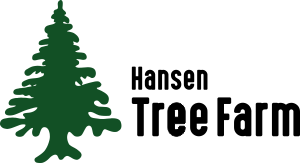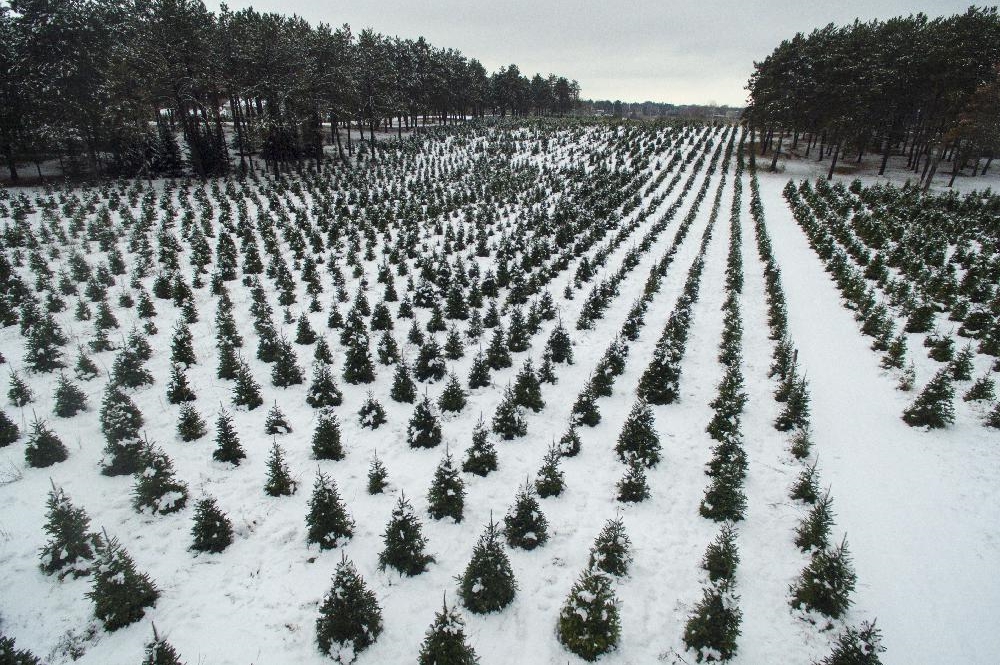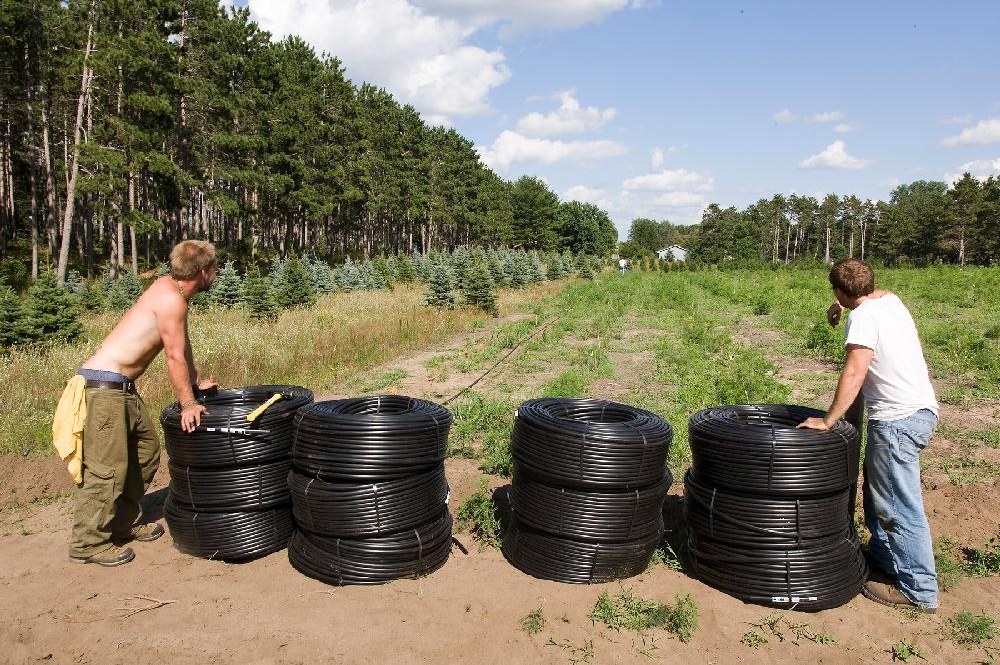
Mark built a three-sided Adirondack shelter by our campfire. It makes fire watching even more pleasant on wet days and is a good background for performers.
After years of drought and mortality, in 2008 we installed a state-of-the-art irrigation system. Kell and Per Hansen laid 24 miles of drip line - the most efficient irrigation method - in rows 6 feet apart. The lines are fed from 2 miles of underground pipe, all leading back to a digital controller in the barn and a 300 foot well. Underground monitors in the fields turn on the system when water is needed, and apply just the right amount. Our goal is to prevent baby trees from dying, then to help them grow more quickly, become fuller and have better color.
Several years of extremely dry fall weather stresses large trees that can't be irrigated and is changing forest areas throughout Minnesota. In addition, several species of Christmas trees are damaged by brutal late winters and spring cold snaps after bud-break.
Each year every tree over 3 feet high must be sheared to give it denser foliage and a more uniform shape. Our trees are lightly pruned, deliberately creating a more open, natural look than other farms. And, we are growing a group of balsam that are not sheared, as people have asked for this.
Over a five-year span Dave sowed several varieties of drought tolerant, low-grow grass between tree rows to choke out weeds. Pollinator plants and other desirable species, such as milkweed, grow between trees.
In addition to tree work, there are innumerable chores that keep us busy, and make the land more convenient and safer for you to access. A short list includes: removing stumps, grading the roads, making signs, repairing equipment, pruning mature trees and removing dead ones, eliminating poison ivy, maintaining parking areas, cutting firewood and mowing 50 miles of grass between tree rows... We hope you enjoy your visit to our farm and forest.








